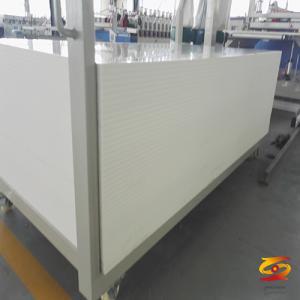Several factors affecting the quality of meltblown cloth?
Several factors affecting the quality of meltblown cloth?Recently, net red meltblown fabrics have exploded, and many meltblown fabric manufacturers have questions: PP raw materials are no problem, the machine is operating normally, and the final meltblown fabrics produced by professional inspection agencies cannot meet the 95 standard. Why is this?
Factors affecting the quality of meltblown cloth
1. Mobility of polymer PP raw materials (MFI)
Meltblown cloth is the best barrier for masks. It is a very fine material. The interior is made up of many superfine fibers criss-crossed in random directions. Polypropylene PP-solvent index is above 1500, the higher the MFI, the finer the wire drawn during melt-blown processing, the better the filtration performance.
2. Hot air jet angle
The hot air jet angle mainly affects the drawing effect and fiber morphology. The smaller angle will cause the fine flow to form parallel fiber bundles, resulting in poor uniformity of the nonwoven fabric. If the angle tends to 90°, a highly dispersed and turbulent air flow will be generated, which is conducive to the random distribution of fibers on the screen, and the resulting melt-blown cloth has good anisotropy.
3. Screw extrusion speed
Under the condition of constant temperature, the screw extrusion rate should be kept in a certain range: before a certain critical point, the faster the extrusion speed, the higher the quantitative amount of melt-blown cloth, the greater the strength; to exceed this critical value, the melt-blown cloth Instead, the strength decreases, especially when MFI>1000. It may be because the extrusion rate is too high, which leads to inadequate wire drawing and serious wire, so that the bonding fiber on the cloth surface is reduced, and the strength of the melt-blown cloth is reduced.
4. Meltblown die head
Many of the spinneret mold materials on the market are not standard materials, and some low-end mold steels are used instead. There will be some micro-cracks that are invisible to the eyes during use. The hole diameter is rough and poor in accuracy. Without polishing, the machine is directly used. . As a result, the spinneret is uneven, the toughness is poor, the thickness of the spinneret is different, and it is easy to produce crystals.
5. Hot air velocity
Under the same temperature, screw speed and receiving distance (DCD) and other conditions, the faster the hot air speed, the smaller the fiber diameter, the nonwoven fabric feels gradually softer, and the more fibers are entangled, resulting in a denser and smoother web. Strength increased.
6. Receiving distance (DCD)
Too long acceptance distance will lead to a reduction in longitudinal and transverse strength and bending strength, and a non-woven fabric with a fluffy feel. In the melt-blowing process, filtration efficiency and filtration resistance will decrease.
If you want to know more about it please do not hesitate to
contact me. WhatsApp:+86-15966835076.









